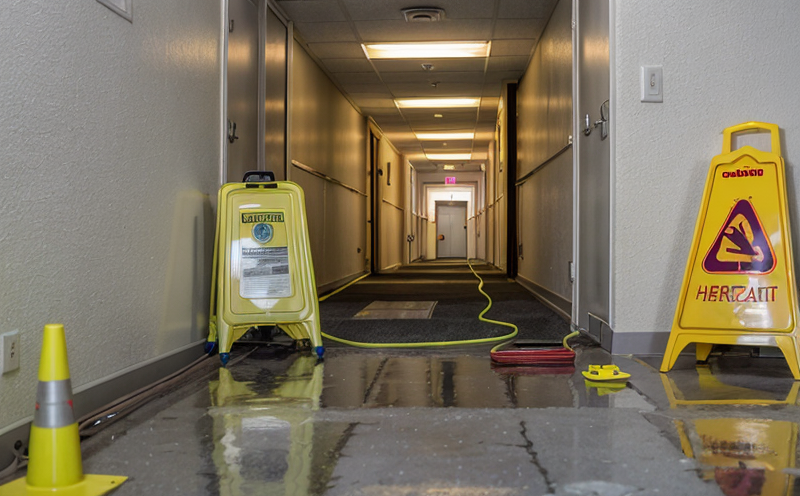BS EN 1834 Explosion Proof Testing for Internal Combustion Engines
The testing of internal combustion engines (ICE) to meet BS EN 1834 is essential in industries where the risk of explosion due to flammable gases, vapors, or dust is present. This standard ensures that equipment used in hazardous locations meets stringent safety requirements to prevent ignition sources from causing fires or explosions.
BS EN 1834 applies particularly to engines designed for use in atmospheres containing explosive mixtures such as methane (natural gas), ethylene, propane, and other similar gases. The testing process focuses on the engine's ability to withstand and not initiate an explosion when exposed to these hazardous conditions.
The test involves placing the engine in a test chamber where it is subjected to controlled explosions of the specified combustible substance. The engine must remain intact and functional throughout this process, demonstrating its capability to operate safely even under extreme conditions. This ensures that the equipment can be used reliably in potentially dangerous environments without compromising safety.
For effective testing, specific preparation steps are required. These include selecting appropriate test specimens representative of the intended use, ensuring all connections are secure and leak-free, and calibrating any associated instrumentation accurately before beginning tests. Proper documentation throughout each stage is crucial for compliance verification.
The results from these tests provide critical data regarding the engine's resistance to explosions and its overall safety performance in hazardous areas. Compliance with BS EN 1834 not only protects workers but also helps businesses maintain regulatory standards, enhancing their reputation within the industry.
Understanding the importance of this testing helps stakeholders appreciate why adherence to such rigorous protocols is necessary for protecting lives and property from potential hazards associated with explosive atmospheres.
Why It Matters
The significance of BS EN 1834 explosion proof testing extends beyond mere compliance; it represents a commitment to safety in high-risk environments. By ensuring that internal combustion engines meet the specified standards, manufacturers and end-users can rest assured that their products will perform reliably under challenging conditions without contributing to incidents involving explosions.
In sectors like oil refineries, chemical plants, and mining operations, where flammable materials are commonly handled or processed, there is an inherent risk of accidental ignition leading to catastrophic events. Properly tested explosion-proof engines reduce these risks significantly by providing robust protection against unwanted fires and explosions.
Additionally, compliance with BS EN 1834 enhances the credibility and marketability of both companies offering these products and those purchasing them. It demonstrates a proactive approach towards workplace safety and environmental stewardship, which is increasingly valued by consumers and regulatory bodies alike.
Scope and Methodology
Test Parameters: The test parameters include exposure of the internal combustion engine to controlled explosions within specified atmospheres containing explosive gases or vapors. This ensures that the engine can operate safely in hazardous locations without causing ignition.
| Parameter | Description |
|---|---|
| Type of Explosive Atmosphere | Methane, ethylene, propane, and similar gases. |
| Explosion Conditions | Controlled explosions within the test chamber. |
| Engine Integrity | Assessment of engine structural integrity post-exposure. |
| Operational Readiness | Evaluation of engine functionality after exposure to explosion conditions. |
Instrumentation: During the test, various instruments are used to monitor and record critical data points including pressure levels inside the chamber during explosions, temperature changes within the engine housing, and performance metrics such as RPM and torque output under different loading conditions.
| Instrument | Purpose |
|---|---|
| Pressure Gauges | Metric recording of internal pressure during explosions. |
| Temperature Sensors | Tracking temperature variations inside the engine housing. |
| RPM and Torque Meters | Evaluating operational parameters post-explosion exposure. |
Acceptance Criteria: An engine passes if it withstands the prescribed explosion without compromising its structural integrity or operational capabilities. Any damage beyond permissible limits would result in failure of the test.
Environmental and Sustainability Contributions
- Emission Reduction: By ensuring that internal combustion engines function correctly even under hazardous conditions, this testing contributes to reduced emissions from poorly performing equipment.
- Resource Efficiency: Properly tested engines are more efficient, leading to lower energy consumption and resource usage compared to improperly designed alternatives.
- Risk Mitigation: Minimizing the risk of explosions in hazardous areas reduces environmental damage and health hazards associated with such incidents.





